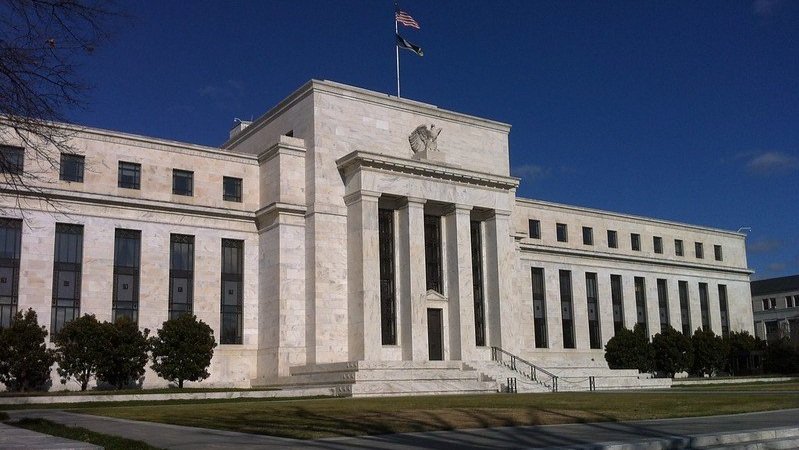Friday Faves - Your Weekly Strong Towns Roundup
Have you ever wondered what it would be like to present an idea in front of your City Council? Have you presented before but want more practice? Do you want to watch someone else make their Strong Towns case in a persuasive way and agree with them? This is the meeting for you!
Join us from 8:00–9:30 p.m. ET on Wednesday, August 31, for a mock council meeting, in which we’ve asked our Strong Towns Toastmasters members to prepare a persuasive speech or participate as a skeptical council member. Guests are invited to attend and enjoy the fun!
Comment of the Week:
This comment came from our Facebook group. Join the conversation here!
Here’s what Strong Towns staff were up to this week:
Pastor L.J. Jennings, outside the Blessings of Faith church in Hayward. (Source: KQED.)
John: Californians need housing. Churches in California have land that can be turned into housing. Sounds like a match made in heaven, right? Not quite. Faith communities in California control more than 38,000 acres of the state’s undeveloped land. And many of them want to use that land to build affordable housing, a movement called “Yes In God’s Back Yard,” or YIGBY. But a recent story out of the Bay Area talked about some of the obstacles churches face when trying to create affordable housing. These obstacles include time (projects often take several years), money, lack of experience working with developers, and complex, often confusing regulations. “Affordable housing is notoriously difficult to build in California,” says reporter Adhiti Bandlamudi, “and without deep pockets or the experience of developers, many churches have tried and failed.” Later this year, the California senate will reconsider a bill that would allow faith communities to build affordable housing by right. My colleague Daniel Herriges wrote a series about incremental development called Unleash the Swarm. My message to California: Unleash the angels. Let churches, mosques, synagogues, and temples be your allies as you struggle to address your state’s housing crisis.
Norm: Michel Durand-Wood’s post “He Ain’t Nimby, He’s My Brother“ is my go-to piece for gently explaining why people resist changes to the suburban development pattern they’ve become accustomed to. When I first read the post, I didn’t realize that the title was a riff on a great song that I now love. This song stands as a metaphor in my mind of the broader work of creating stronger communities. It gives me chills every time I listen to it. The story of the song’s title phrase is powerful even though the origin of the expression seems to have arisen in two different settings—but both stories are stirring:
The legend goes that around 1918, the Boys Town orphanage’s founder, Father Edward Flanagan, saw a boy, Reuban Granger, carrying another boy, Howard Loomis, who had polio and wore leg braces, up some stairs. Flanagan asked Granger if carrying Loomis was hard. The boy replied, “He ain’t heavy, Father, he’s m’ brother.”
However, in his 1884 book, The Parables of Jesus, Reverend James Wells uses an almost identical expression. He writes a story about a little girl carrying her baby brother on her back. When asked whether she was tired, the girl replied, “No, he’s not heavy; he’s my brother.”
No matter its titular origins, the song’s most resonant moment occurs in the second stanza with the words,
…So on we go
His welfare is of my concern
No burden is he to bear
We'll get there
… For I know
He would not encumber me
He ain't heavy, he's my brother
(Source: Flickr.)
Daniel: Shelterforce is a blog worth reading if you’re interested in the nuts and bolts of housing policy. This piece is part of an ongoing series on the “financialization” of the housing market, featuring various perspectives on what that often-ill-defined concept means and why it matters. The linked article shines a light on a factor in the current story of sky-high rents and home prices that has drawn less attention, perhaps, than the role of neighborhood NIMBYs and regulatory barriers. That is the role of the Federal Reserve’s monetary policy. During the Great Recession, and again in the COVID-19 pandemic, the Fed practiced quantitative easing: it flooded the market with cheap money by buying up assets from banks. All that money wants to go somewhere, and the predictable result is a run-up in the prices of the kinds of assets rich investors hold—including residential real estate. It’s not a new argument, but this is a good overview of it.
—
Finally, from all of us, a warm welcome to the newest members of the Strong Towns movement: Rakeen Ahmed, Travis Allison, Matthew Alvarado, Nicholas Bury, Guy Cammilleri, Ryan Crane, John Dagger, Travis Dixon, Jim Duggan, Stewart Gibson, Andrew Gothro, Scott Graham, Susan Graham, Gavin Griffin, Jan haftek, Omar Hamza, James Hansen, Duncan Hatch, Christa Hodges, Alexander Howard, Makayla Jackson, Peter Jaszczak, Kimberly Kocer, Kathleen Minik, Michael Montgomery, Kevin Mulkern, Laura Nakamura, Amanda Page, Enrique Riojas, Robert Slobod, Richard Sterry, and Linda Wolyniec.
Your support helps us provide tools, resources, and community to people who are building strong towns across the country.
What stories got you thinking this week? Please share them in the comments!




